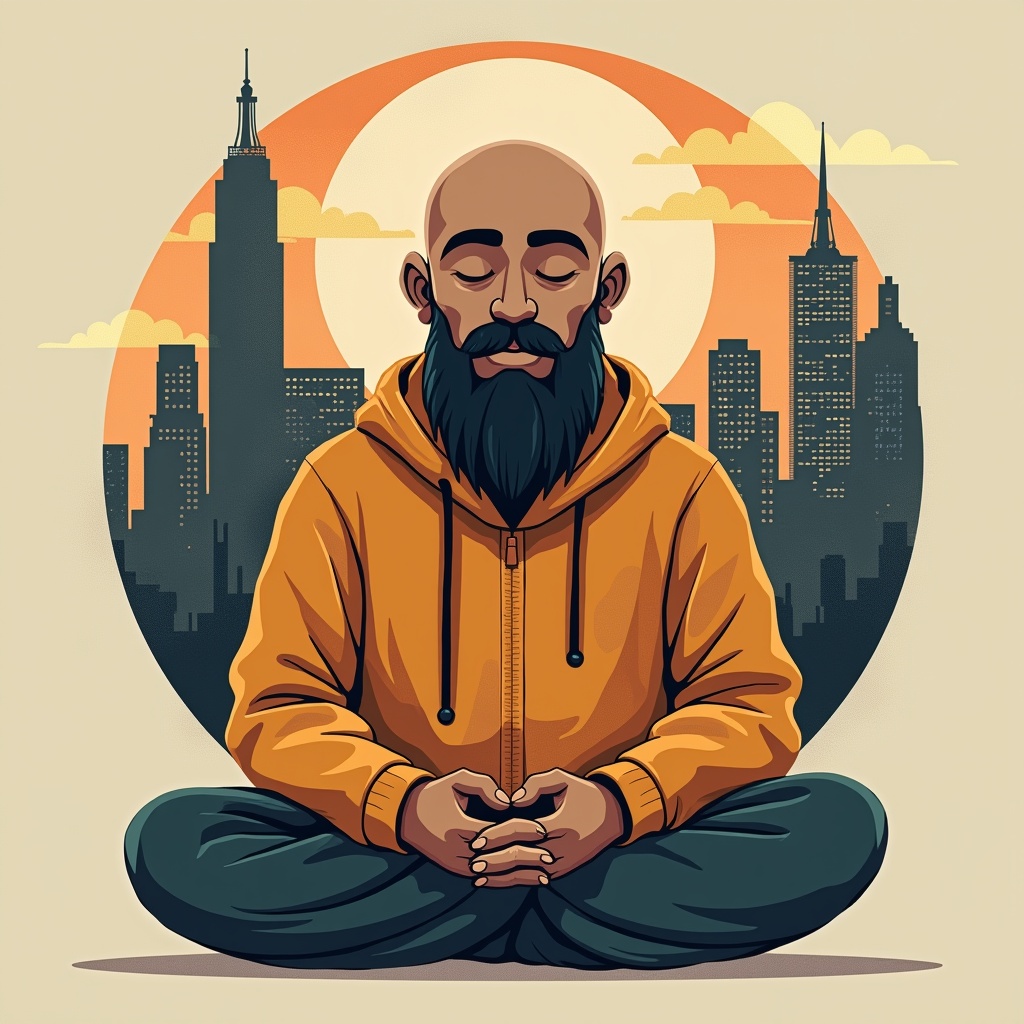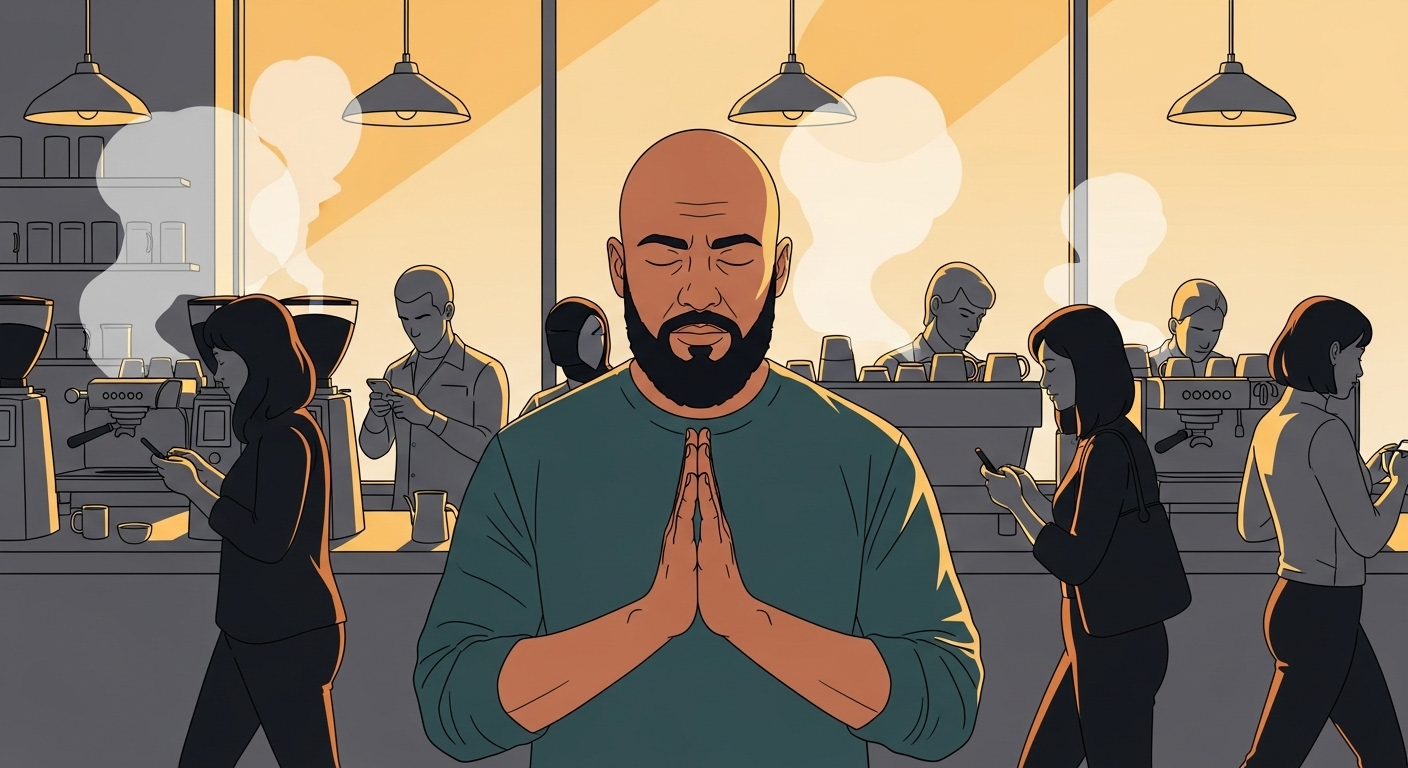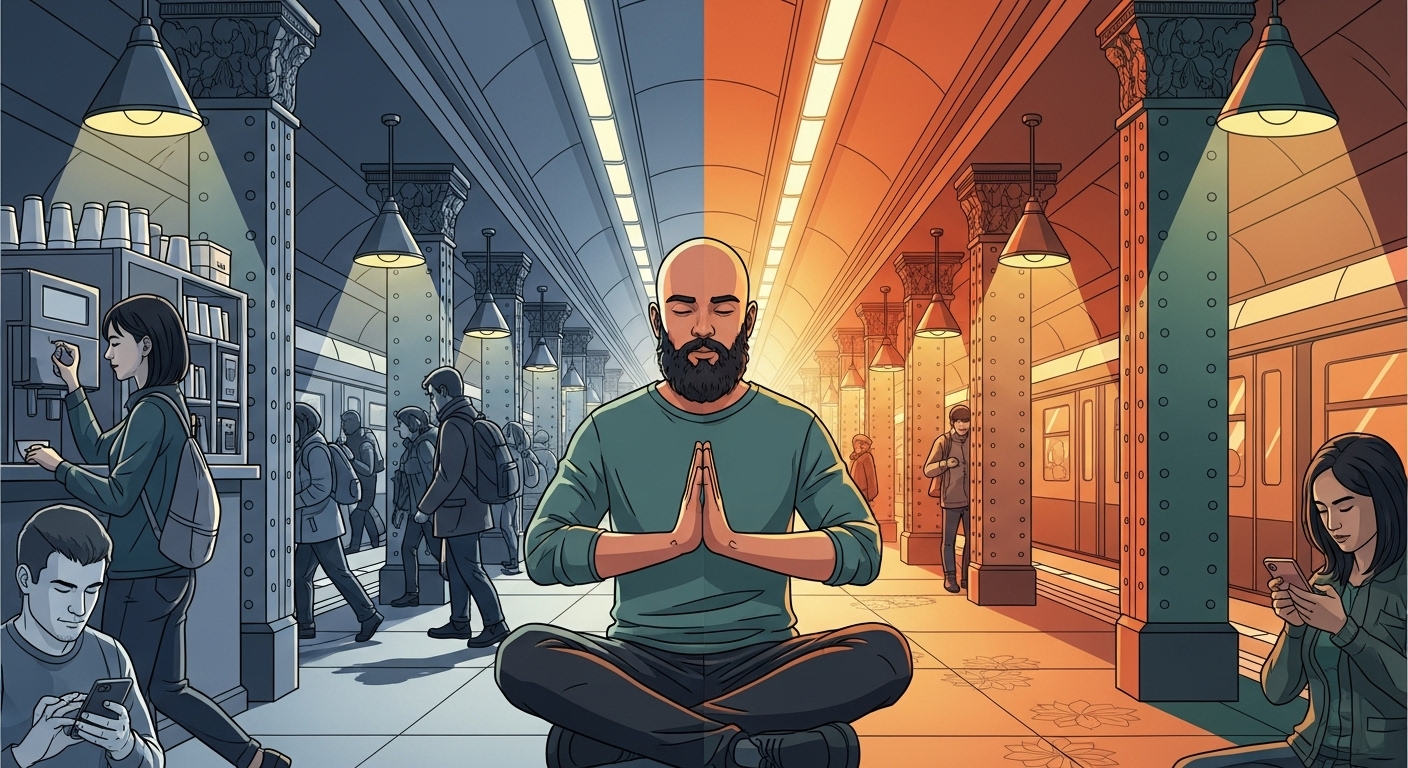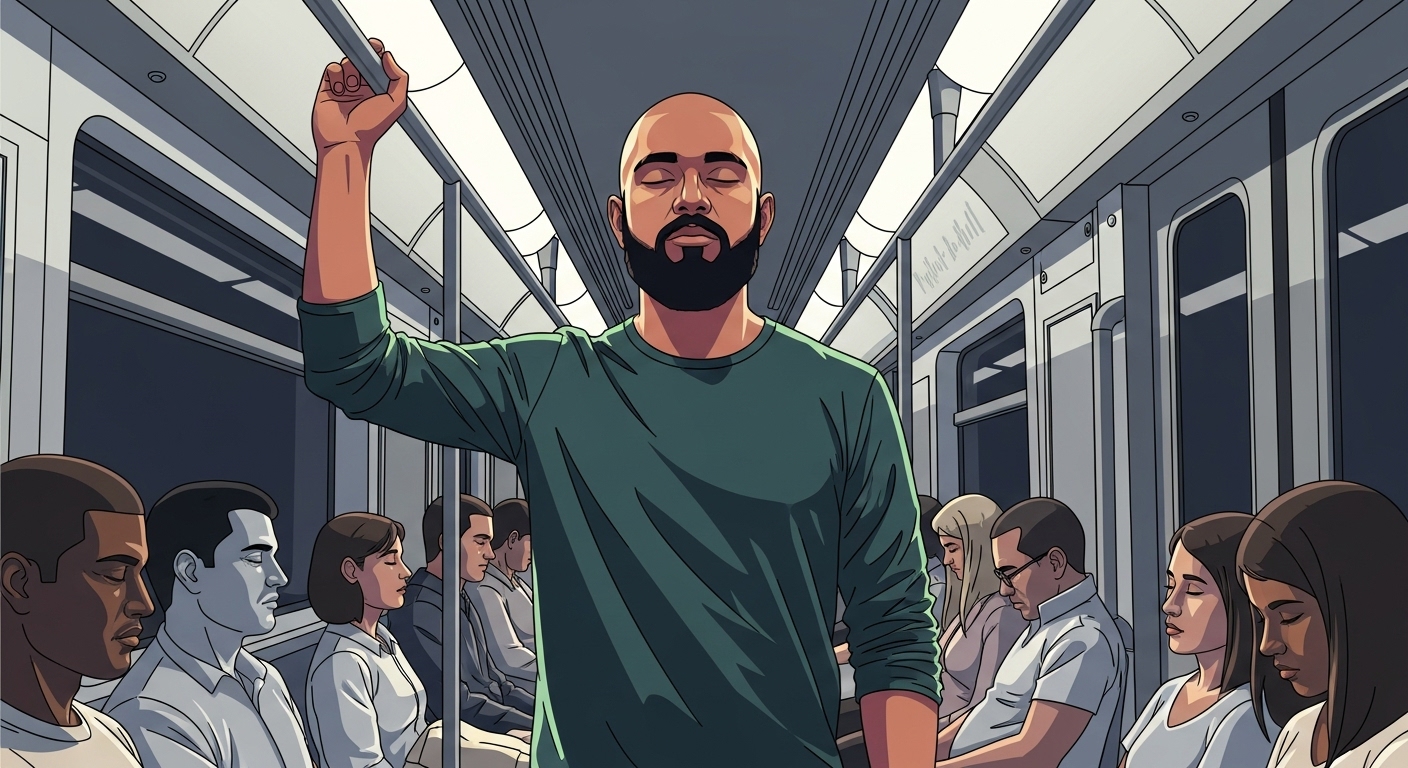Every Street a Sangha: Why the Future of Meditation Lives in Cities
The ancient teachers were right—they taught in marketplaces, not just mountains. Here's how your city becomes your spiritual community and why urban meditation is the practice our world needs now.

Something Luna said keeps echoing in my mind: “Even in concrete, life finds a way.” She was talking about plants, but she could have been describing consciousness itself.
Your practice might feel small right now, squeezed into the cracks of a busy life. But like those stubborn dandelions pushing through sidewalks, presence is incredibly powerful. It doesn’t need much space. It just needs intention.
The City as Living Teacher
After months of practicing in subways, I’ve realized something profound: the city isn’t the opposite of nature—it’s nature in a different form.
Think about it. What is a city but humans doing what humans do? Gathering, creating, moving, living. An ant colony is natural. A beehive is natural. So why do we think a city—a human hive—is somehow separate from nature?
Your morning rush hour? That’s migration patterns. Your neighborhood coffee shop? That’s a watering hole. Your apartment building? That’s your hive, your nest, your den. We’re still the same creatures who gathered around fires and formed tribes. We just do it vertically now.
Once you see this, everything changes. You’re not trying to find nature in the city. You realize the city IS nature. Urban nature. Human nature. And just like any ecosystem, it has its own wisdom to teach.
The Sangha You Didn’t Know You Had
In traditional Buddhism, the sangha—the community of practitioners—is one of the three jewels. Essential for awakening. But we keep thinking we need to find special people, join specific groups, seek out fellow meditators.
Your sangha is already here. It’s everyone on your morning train. Everyone in your office. Everyone standing in line at your bodega. You don’t need them to meditate with you. You just need to recognize that you’re all in this together.
That mother on the subway bouncing her baby? She’s teaching patience. The construction worker who gave up his seat? He’s teaching generosity. The teenager sharing his phone battery? He’s teaching compassion. Even the angry businessman kicking the door—he’s teaching you about suffering and how we all handle it differently.
Every person you encounter is part of your spiritual community. They just don’t know it. And that’s okay. The practice works anyway.
Stealth Meditation: Practicing in Plain Sight
Here’s what nobody tells you about urban spiritual practice: it’s meant to be invisible. You’re not performing peace. You’re being it.
When I sit on a rush-hour 4 train, nobody knows I’m meditating. I look like every other commuter. Eyes soft, breathing steady, present but not performative. The practice is interior. The effects ripple outward.
This is actually more powerful than isolated meditation. When you practice alone on a mountain, you’re only transforming yourself. When you practice in a crowded subway, you’re adding calm to the entire city’s nervous system. You’re teaching the streets how to breathe.
Your Daily Urban Monastery
Here’s how to make this real in your life:
Choose Your Monastery Moments: Pick three regular parts of your day. Maybe it’s:
- Waiting for your morning coffee
- Walking from the subway to work
- Standing in the elevator
Same time, same place, every day. Three breaths of full presence. That’s it. But do it with complete intention.
Find Your Bells: What sounds happen regularly in your day? Pick three to be your mindfulness bells:
- The coffee shop door chime
- The elevator ding
- The crosswalk signal
Every time you hear them, come back. One breath. Full presence.
Identify Your Teachers: Who do you see regularly but never really see? The security guard, the barista, the person who sits across from you on the train. See them. Really see them. They’re teaching you something about being human in this city. Pay attention.
The Revolution Is Interior
Aria talks about being the first generation to grow up fully integrated with technology. Well, maybe we’re also the first generation to fully integrate spirituality with urban life. Not escaping to monasteries. Not waiting for retreats. Finding the sacred right here in the subway delays and sidewalk cracks.
The ancient teachers knew this. They taught where people were. Markets, crossroads, cities. They understood that wisdom needs to meet life where it happens.
And life? Life happens here. In the noise and rush and beautiful chaos of our cities.
Your Practice Starts Now
Don’t wait for the perfect moment. It’s already here, disguised as your imperfect life.
Tomorrow, when you’re back in the urban flow, remember: You’re not trying to escape it. You’re learning from it. Every crowded space is a chance to practice spaciousness. Every noise is a chance to find inner quiet. Every difficult person is a buddha in disguise, teaching you exactly what you need to learn.
Start with one breath. On your next commute, take one conscious breath. Feel your feet on the subway floor. That’s your foundation. You belong here, in this imperfect perfect moment.
Then expand. Include one person in your silent blessing. Then another. Then another. Watch your subway car transform into a sanctuary. Watch your difficult commute become a teaching. Watch your city reveal itself as the monastery it’s always been.
The mountain isn’t somewhere else. The mountain is already here, made of concrete and steel and eight million beating hearts. You don’t need to climb it. You’re already on it. You just need to see.
This concludes our three-part series on the Urban Monastery. Start with one conscious breath on your next commute. That’s all. The city will teach you the rest.



